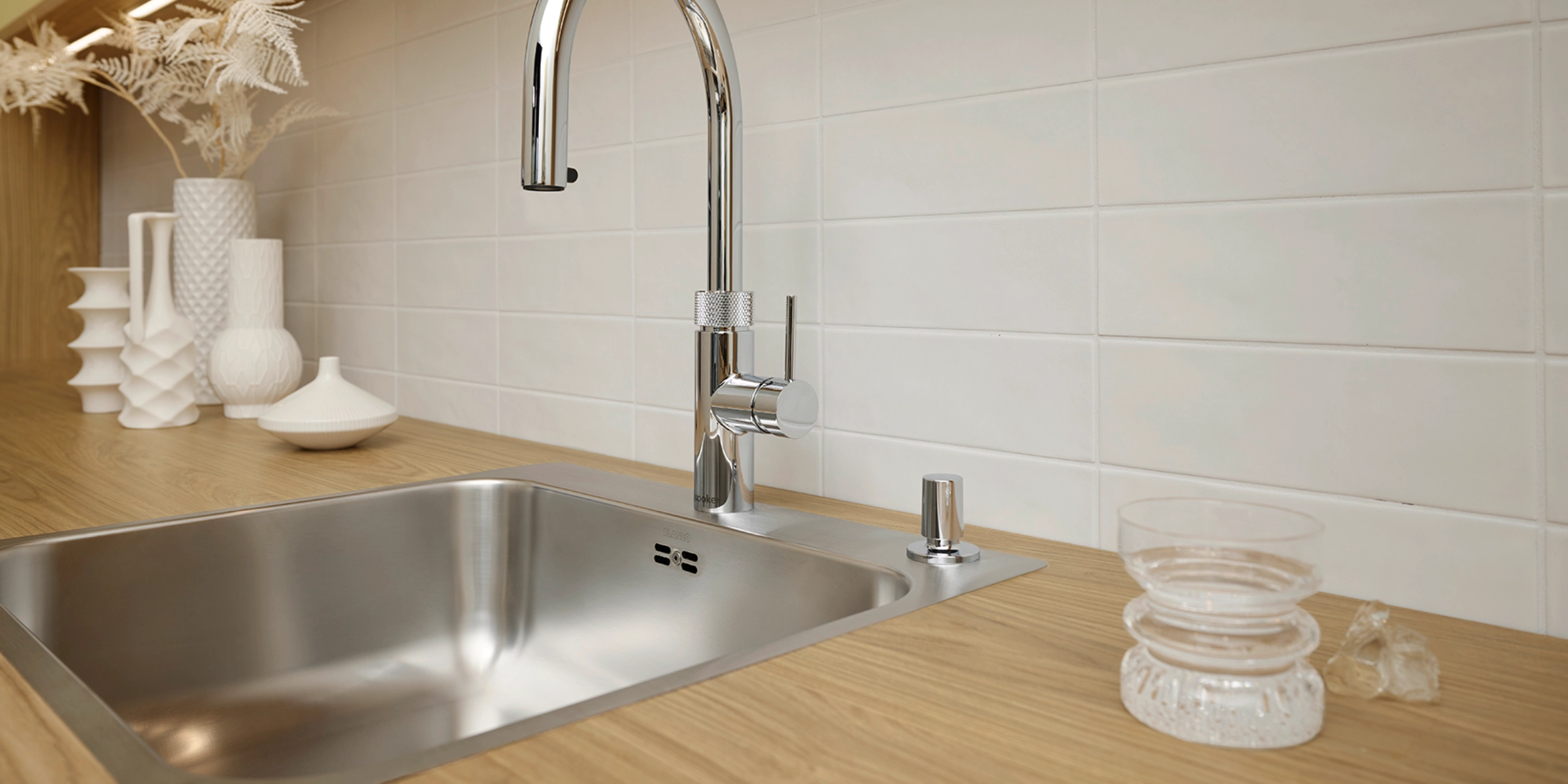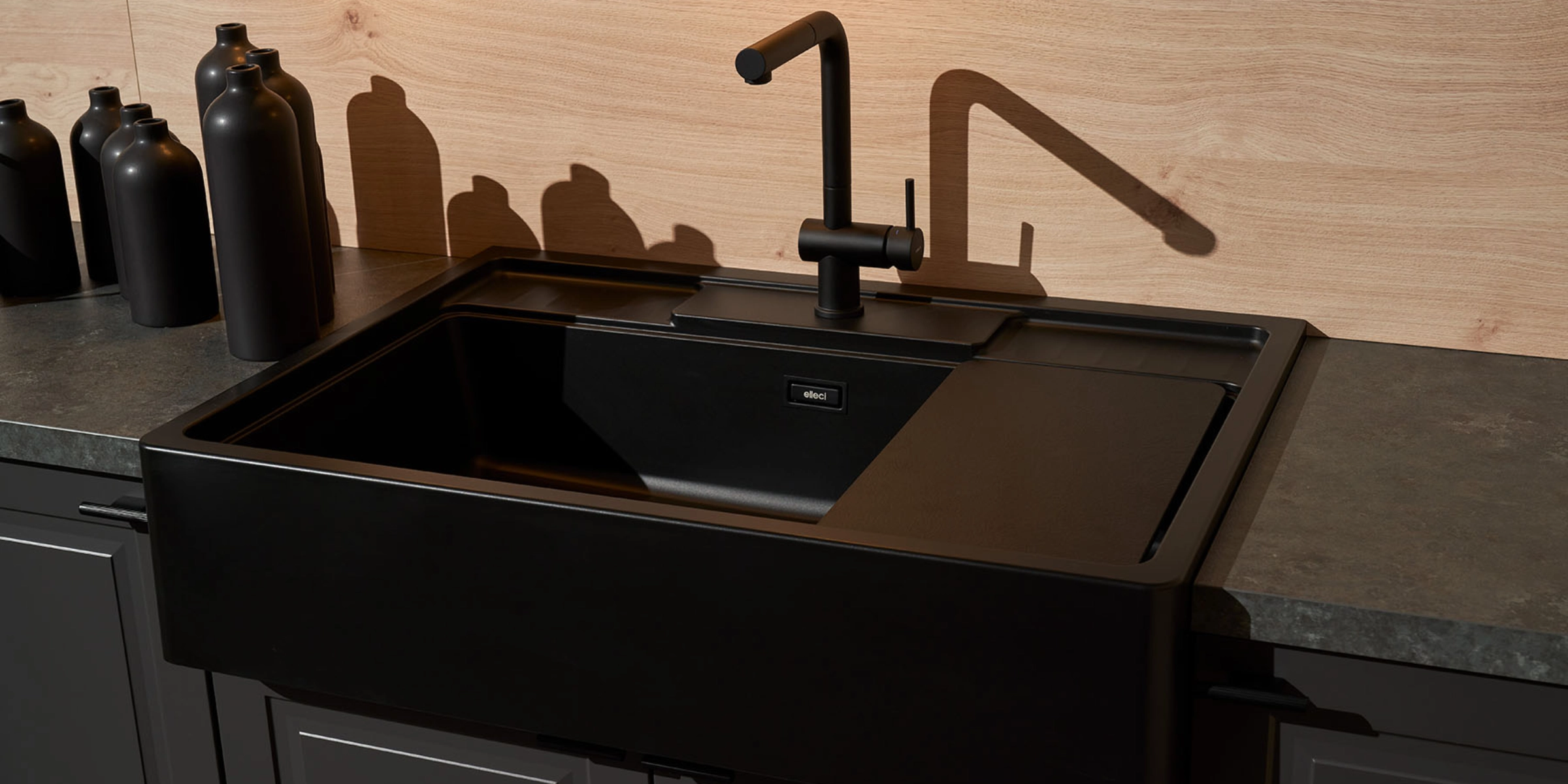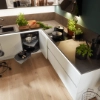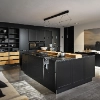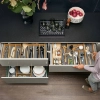The right sink for your kitchen: Function meets design
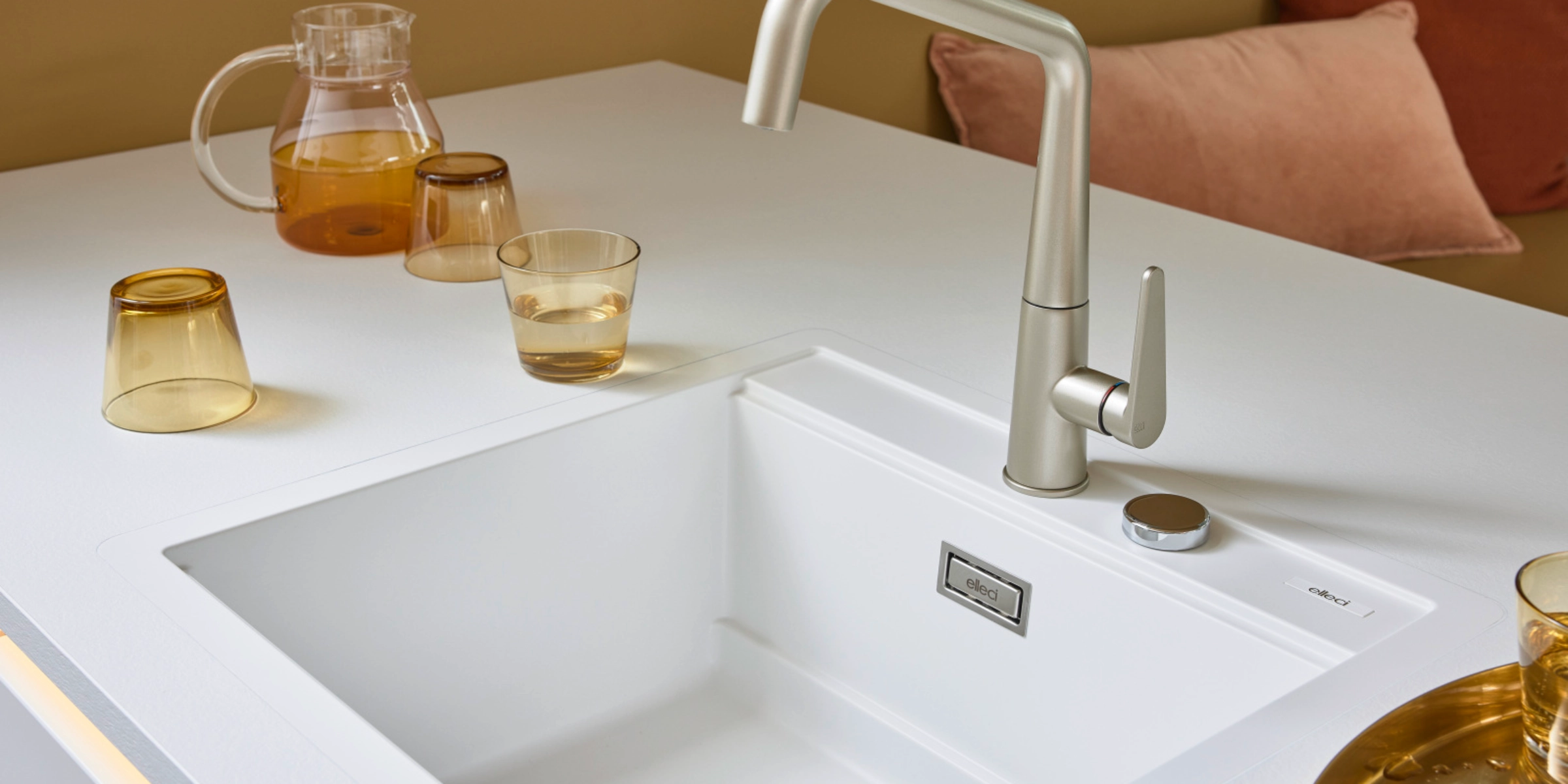
Quickly rinse the salad, fill the pot with water for pasta or pour away the cold coffee. We all use the sink every day and probably without giving it much thought. It's even more worthwhile to carefully consider this before purchasing your kitchen. Do I exclusively use the dishwasher and actually only need a water source? Or do I frequently cook for many guests and often wash the quality pans and the inherited gold-rimmed dishes by hand? The size, shape, and style of the kitchen also play an important role in the selection. To make the decision a bit easier for you, we have gathered all the important information about the sink here.
Shapes
There is also plenty of design flexibility regarding sink shapes: A rectangular or square basin is very classic—if space permits, with an additional draining area. But round or oval sinks are also popular and particularly suitable as single basins for small kitchens. Sometimes, a corner solution makes sense, typically using a trapezoidal sink. Personal needs should also play a role when selecting the shape. If a lot of washing-up is done by hand, for example, a double sink makes sense; a combination of large and small basins is also possible here. Those who frequently use large pots or baking trays will appreciate an XXL basin or an especially deep sink.
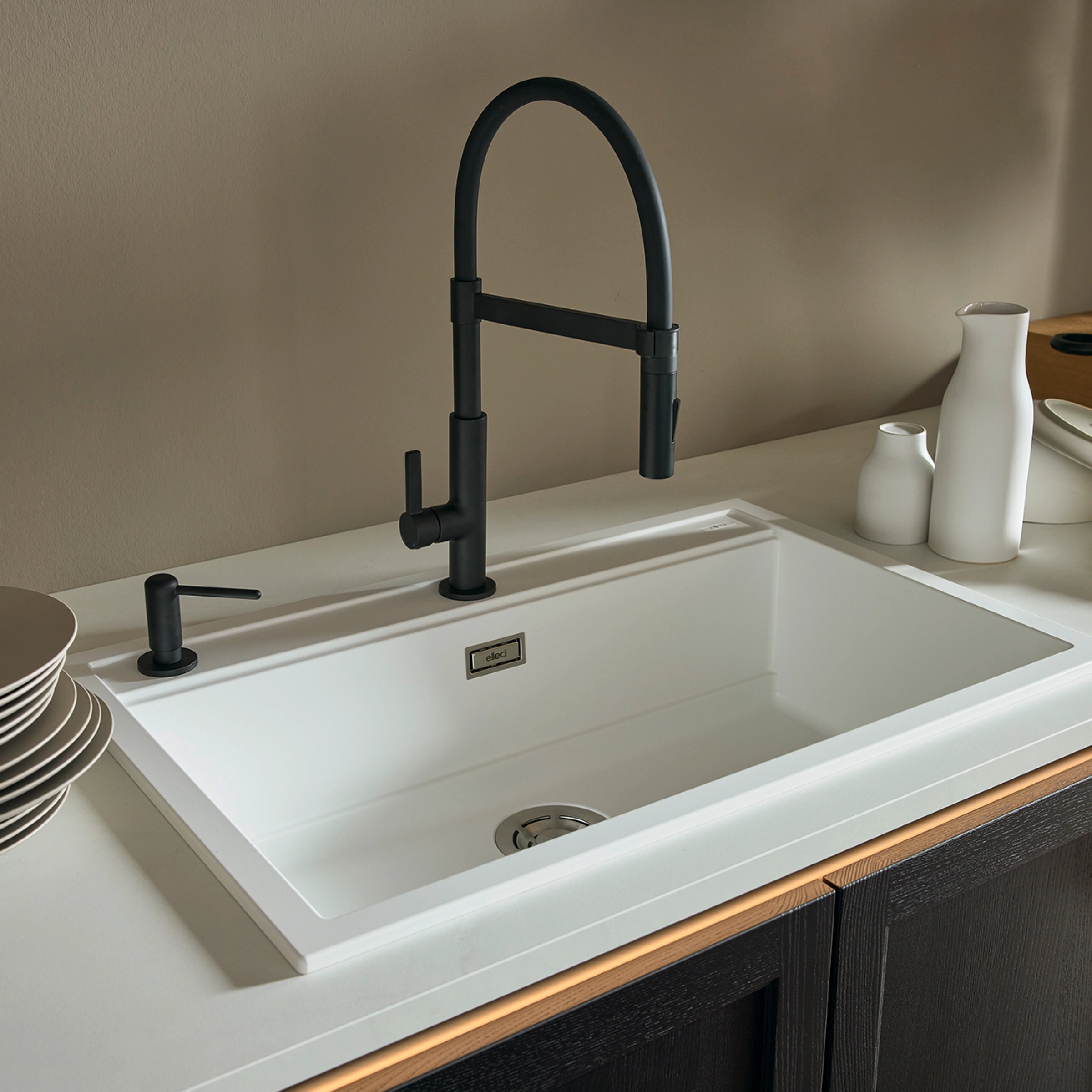
Material and Colors
Stainless steel and granite composite are probably the most common materials for kitchen sinks. They impress with their attractive appearance, easy maintenance, and durability. Especially composite materials, also called artificial stone or composite, are convincing due to their particularly wide variety of colors and surfaces. But stainless steel is also now available in many elegant color variants; Nolte, for example, offers them in an extraordinary anthracite look. Ceramic is also increasingly used again as a material. It is scratch-resistant and easy to maintain, but hard impacts can leave marks.
Stainless steel and granite are probably the most common materials for sinks. They are particularly easy to maintain and durable.
Useful extras
With some extras, you can further enhance your washing-up area. Thanks to a remote-operated drain, you can remove the plug without having to reach into dirty water or leftover food. A particularly practical feature is a faucet with a pull-out spray hose. This allows even large pots or watering cans to be filled with water effortlessly. If your sink is located directly in front of a window, you should consider a faucet that can be lowered or tilted. Hot water fittings or sparkling water taps provide a special aha-effect: at the press of a button, boiling hot water or filtered, chilled water, with or without carbonation, comes directly from the tap. Both options are not only sustainable but also save time and space. With the appropriate accessories, your sink becomes a multifunction center: insertable boards extend the work surface; precisely fitting strainers make cooking preparations easier; matching detergent dispensers and dish brush holders ensure an attractive overall appearance.
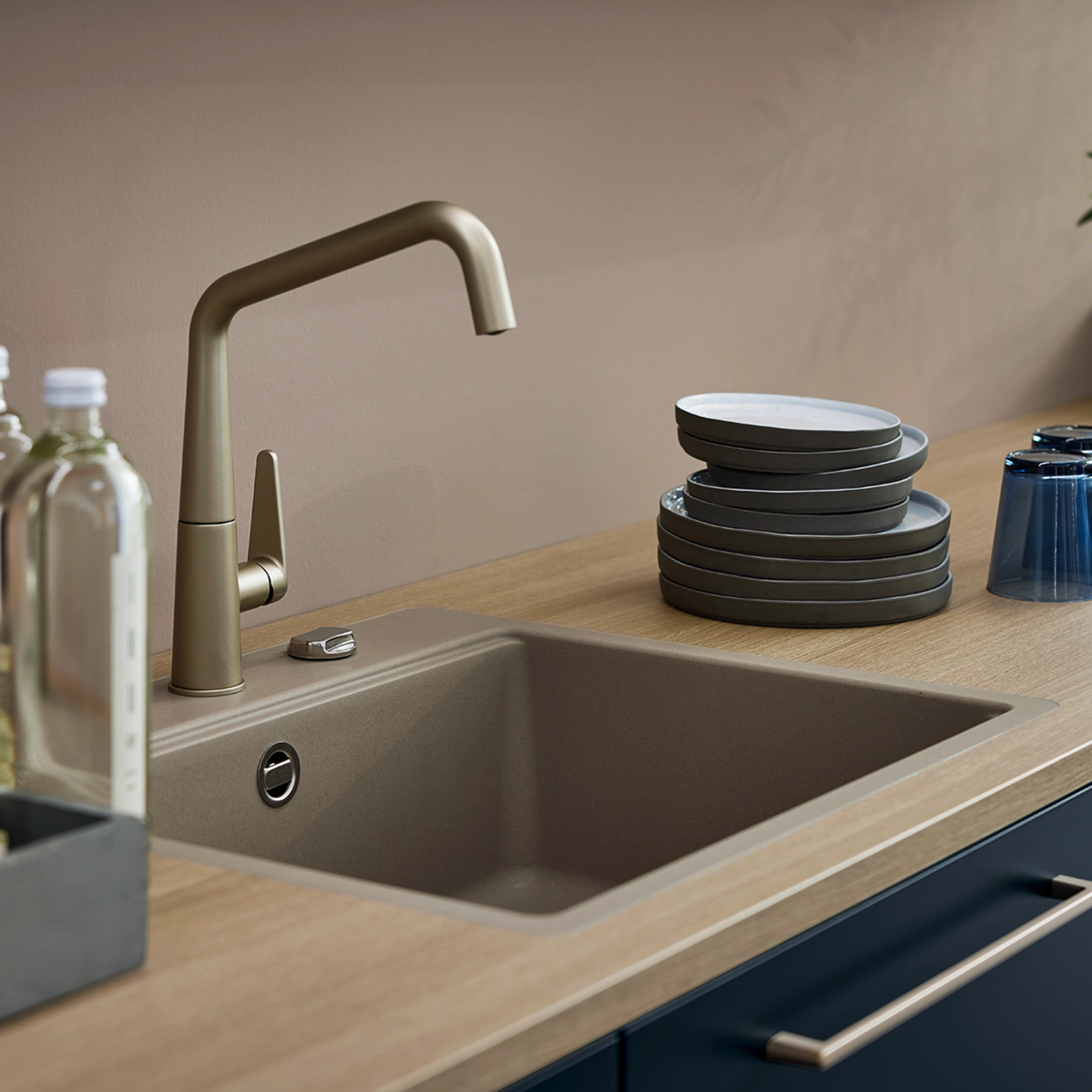
Sink and kitchen planning
When selecting the sink, ergonomics also play an important role: For example, do rather tall or short people work in the kitchen? Left-handed or right-handed (important for positioning the draining area)? Important for planning is also the location of the water connection and whether hot water is produced, for instance by a continuous-flow heater or boiler. Also not to be overlooked is the sink base cabinet. With the correct division and organization, you can create additional storage space here. It is particularly practical to place flexible waste separation systems directly underneath the sink. This is usually where most kitchen waste is generated and can thus be disposed of immediately – without additional walking distances.
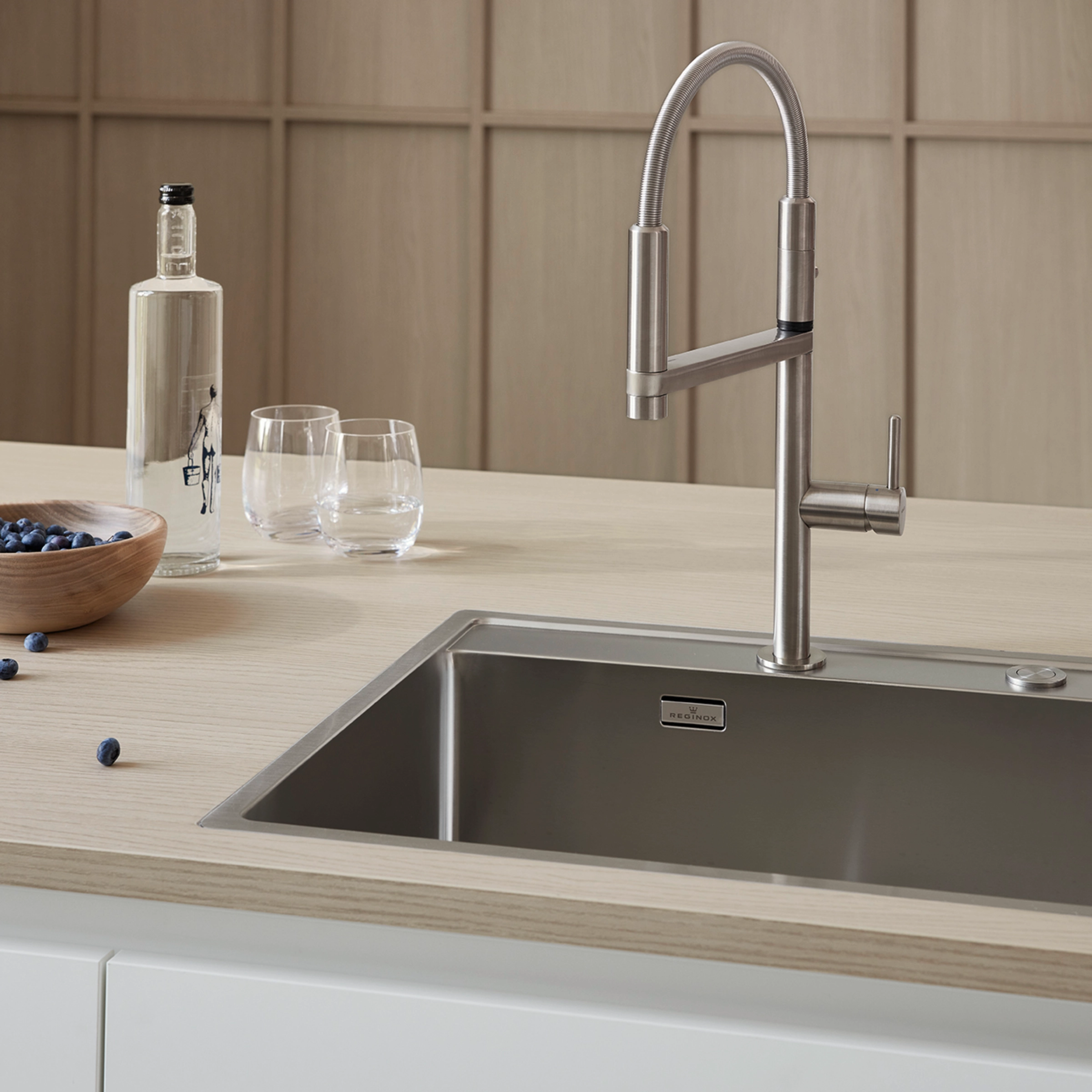
More information
In our kitchen journal, you’ll find even more inspiration for planning and designing your dream kitchen.
Discover tips and tricks
Discover many more tips and tricks in the Nolte Magazin.


